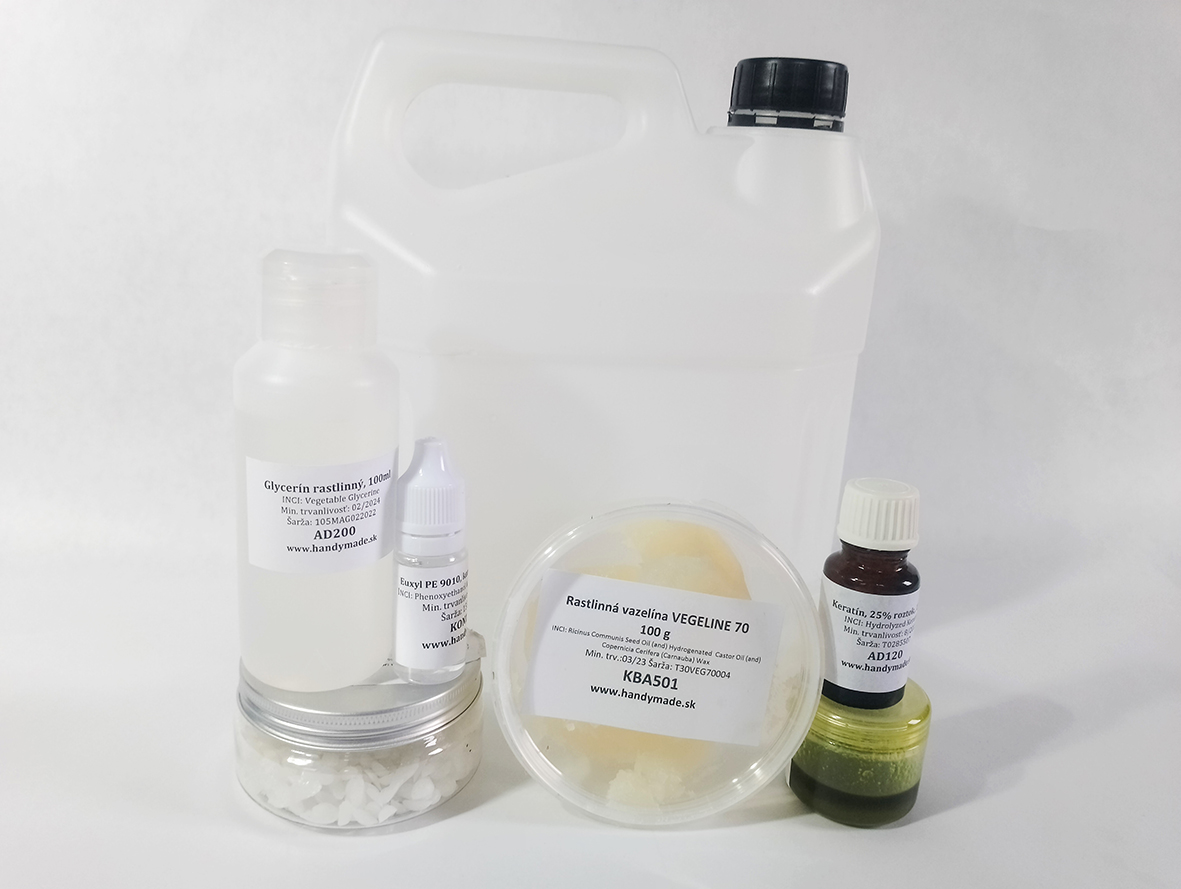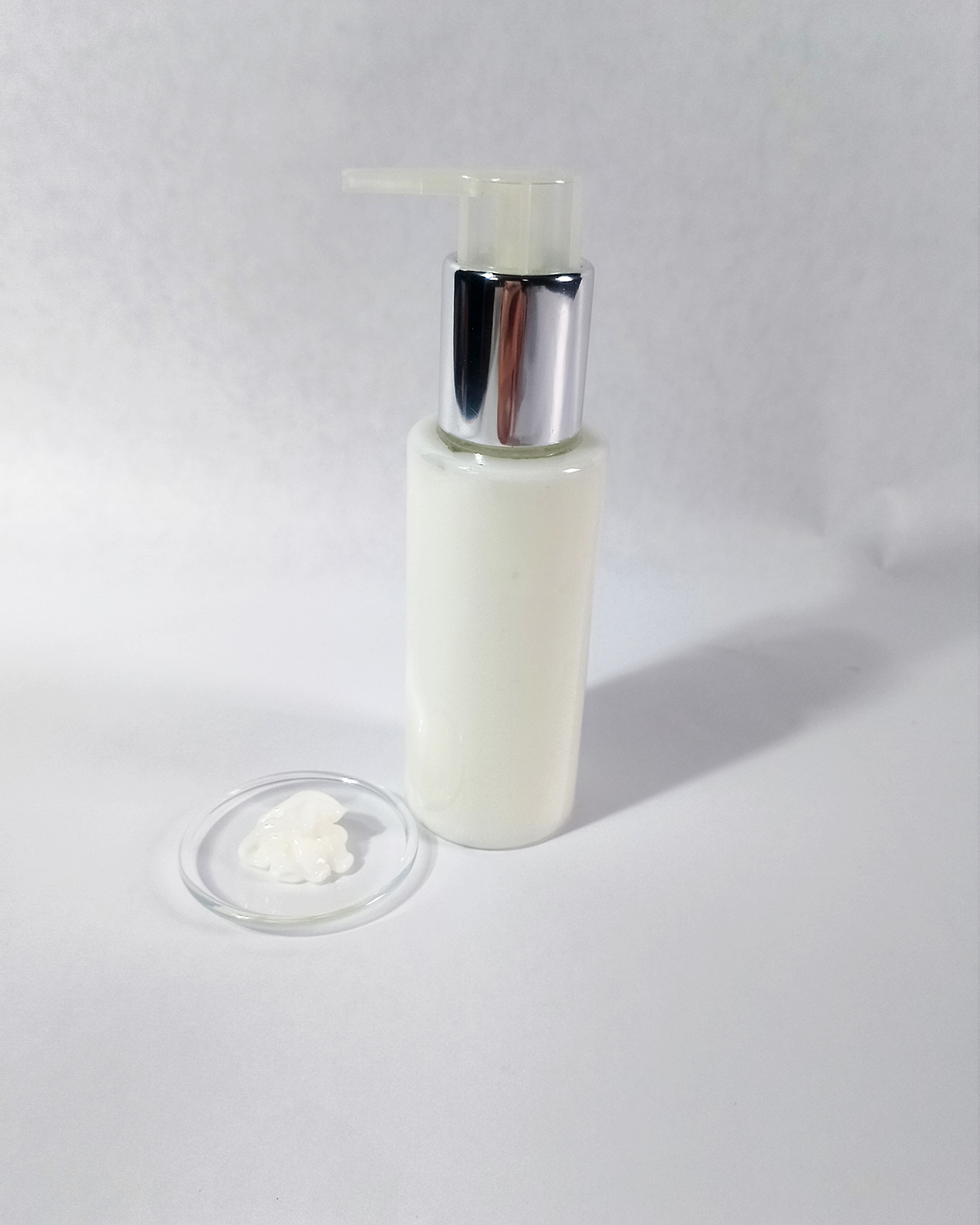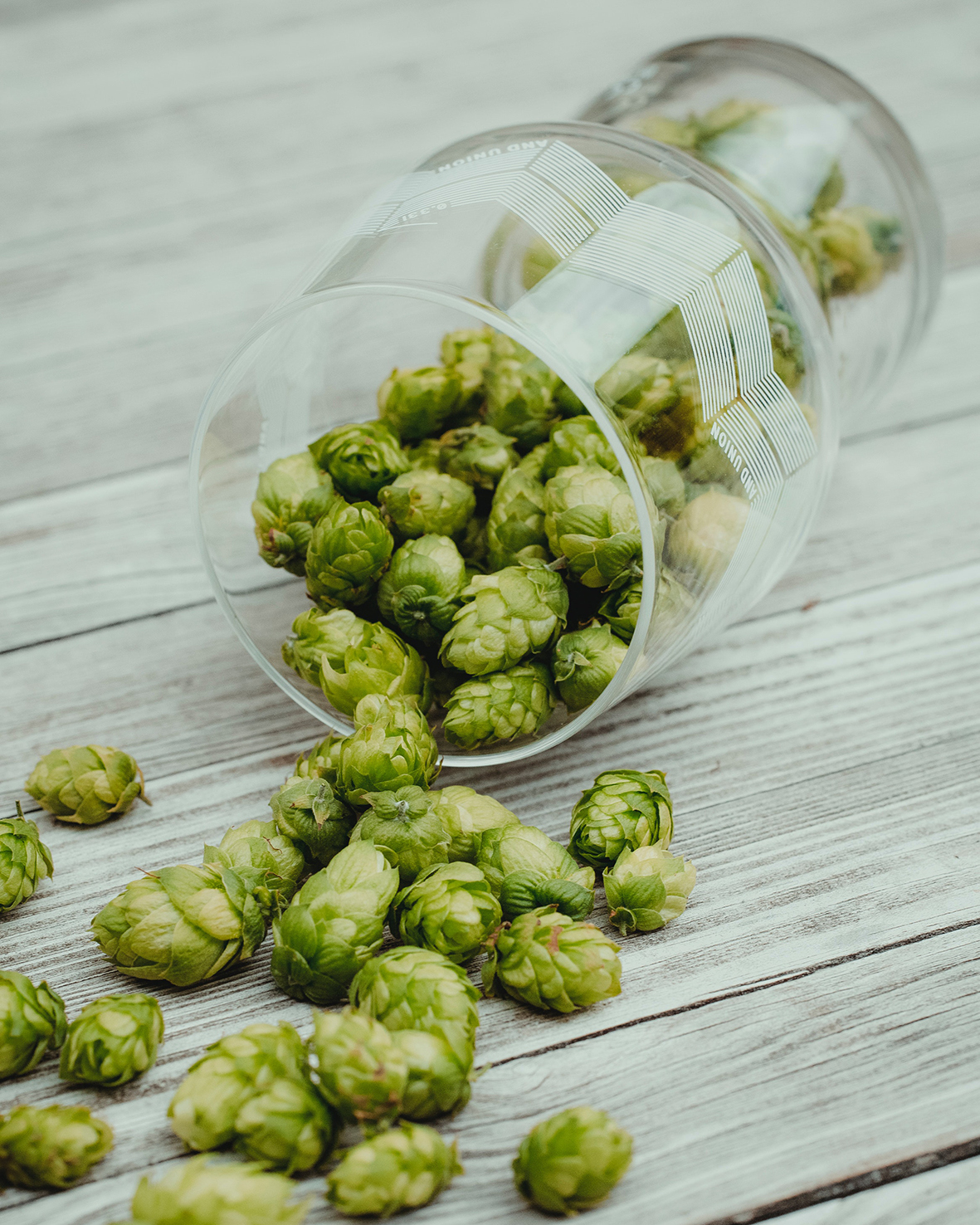Hops hair conditioner
Hops hair conditioner strengthens from roots to ends. Make the conditioner according to our instructions.
The nourishing effects of hops have long been sought after, especially in hair cosmetics. We have prepared for you a recipe for a strengthening hair conditioner containing hop CO2 extract. Make a nourishing conditioner that will treat your hair and reduce frizz thanks to its BTMS content.
HOPS CONDITIONER - INGREDIENTS

Cationic tenside has been used for the production of hop conditioner, which is great for hair cosmetics due to this charge. It is BTMS and this substance not only treats the hair, but also thickens the product, so you can create your conditioner in a consistency similar to what you are used to from commercially available products.
Phase INGREDIENCE %
A Demineralised water 86,80
A Glycerine 5,00
B BTMS 3,00
B Vegeline 70 3,00
C keratin 1,00
C Euxyl PE 9010 - preservative 1,00
C CO2 extract hops 0,20
bottle with pump ---
HOP CONDITIONER - PROCEDURE
1. disinfect all utensils, packaging and containers that you will use with, for example, ethanol.
2. weigh water and glycerine (phase A) into a heat-resistant container, mix thoroughly and cover with foil.
3. weigh the BTMS and Vegeline (phase B) into a second heat-resistant container, again cover the container with foil.
4. place both foil covered containers on a water bath and heat until both mixtures are at approximately the same temperature (70 °C) and Phase B is completely dissolved.
5.then, with the water bath still running, pour the aqueous phase A into phase B and start mixing immediately with an immersion stick blender.
6. remove the container from the water bath while still mixing and continue mixing.
The mixture will gradually begin to thicken as it cools.
7. stir vigorously with the mixer for at least 5 minutes, then periodically every few minutes until the mixture reaches room temperature.
8. once cooled, stir the Phase C ingredients thoroughly into the product.
9. fill the mixture into a previously disinfected container.
HOP CONDITIONER - TIPS AND TRICKS
Make making hop conditioner easier with our tips and tricks!
When heating, it is important that phase B is fully dissolved, otherwise there will be lumps of undissolved ingredients in the final product. At the same time, before combining phase A and phase B, make sure that they are at almost the same temperature of around 70 °C, otherwise the raw materials may not combine well and the phases will separate.
Be sure to cover the containers - this will prevent water loss from phase A or premature water ingress
into phase B. If you want to be extra consistent, you can weigh phase A before heating, note this number
and then replenish the missing evaporated water after heating. However, be aware that many scales are not comfortable if you place hot items directly on top of them, so support the container with a plate or other support when weighing after heating. Also in this case, heat phase A about 5 °C more than phase B so that the temperature of phase A does not drop too low while you weigh and refill the evaporated water.
Start mixing while the container is still on the water bath, this will prevent this,
bTMS to solidify before it is thoroughly mixed with the other ingredients. As the resulting product has a thicker consistency than a regular cream or body lotion, do not use a milk frother to mix. Traditional flashlight milk frothers do not have the power to combine thicker mixtures such as our Hop Conditioner. Opt for a classic stick blender, a regular blender attachment will suffice.
For storage, bottles with a pump are handy so you can dispense the product well. You can also use cups or shampoo bottles, but the disadvantage with cups is thatyou are scooping the product with your hands and thus introducing unnecessary contamination into the rest of the product.

HOP CONDITIONER - INGREDIENTS AND THEIR IMPORTANCE
Below we will look at the different raw materials used for the production of hop conditioner. You will also learn more about their possible substitutes or changes in their representation, so that you can create a tailor-made product.
DEMINERALISED WATER
From the list of raw materials and their percentages, it is already clear that demineralised water is the most dominant raw material in the product. It is demineralised or distilled water that is used in production because this liquid is free of minerals and so these substances will not interfere with the stability of the product or the effectiveness of the active ingredients.
However, demineralised water is not the only raw material you can use. You can use a wide range of hydrolates or floral waters, which are also distilledand thus do not contain minerals, but rather volatile substances from the plants from whose water mixtures they have been distilled. As a result, they bring nourishing substances and a natural fragrance to the products.
Try replacing some or all of the demineralised water with your favourite hydrolates, or combine several hydrolates according to your preference.
GLYCERINE
The main moisturizing agent for conditioner is glycerin. It is a common ingredient in many cosmetic products. Glycerin is a translucent liquid with a syrupy consistency that dissolves well in water and can also handle heating. It can be omitted from the recipe and substituted with water, but you will lose its nourishing
and softening properties.
BTMS
BTMS is one of the most widely used conditioners in hair cosmetics. This substance is sold in the form of white pellets or flakes of a waxy nature and dissolves when heated, similar to conventional waxes or vegetable butters.
In addition to its conditioning properties, BTMS has a positive charge - it is a cationic conditionerit is a cationic cationic treatment and thus helps to neutralise the negative charge present on the hair and thus reduces frizz. It is also an emulsifier and thickener and therefore allows the water and oil ingredients to be combined together
and is primarily responsible for the resulting consistency.
Increasing the BTMS content in a recipe at the expense of water will result in an even thicker and denser product, conversely, decreasing the BTMS content will result in a more fluid product. If you increase the BTMS content too much, you can end up with an overly stiff mixture - this is also why BTMS is the basis of solid conditioners.
BTMS can also be replaced by BTMS 50 with similar properties and a higher active ingredient content.
VEGELINE 70
The substitute for oils and vegetable butters in this recipe is the vegetable petroleum jelly Vegeline. Its advantage is that it already directly combines vegetable oils and waxes and can thus be used as a full substitute for these raw materials. In addition, the thick consistency of this vegetable petroleum jelly also contributes to the overall viscosity of the product, so any change in the representation of Vegeline will result in a change in the consistency of the product
(but to a lesser extent than for BTMS).
If you feel that the hop conditioner is not nourishing enough and your hair is still dry, increase the Vegeline content in the recipe. Conversely, if you want a less greasy product, take about 1% off the Vegeline content.
Vegeline can, of course, be replaced by vegetable oils and butters, but again, expect a change in consistency. However, there is no need to worry about this vegetable petroleum jelly; unlike conventional petroleum jelly, it is purely vegetable in origin and free of paraffin, mineral oils and other petroleum-derived ingredients.
KERATIN
Our hair is largely made up of keratin, which is why it is advisable to occasionally replenish this substance in the form of conditioners or hair masks. Keratin is a brownish liquid with a characteristic smell that usually does not interfere with the overall scent of the product, since keratin is used in relatively low doses.
It is a substance of a protein nature that can strengthen the hair and provide it with the necessary nutrition. Keratin can be omitted from the recipe and substituted with water or other active ingredients intended for hair products (check beforehand that the ingredient is compatible with the other ingredients, especially in terms of pH and charge).
CO2 EXTRACT HOPS
SupercriticalCO2 extraction is a new method for extracting non-polar substances (especially oily substances) from plant materials. It is a very gentle method to the active substances, therefore these extracts are very effective already in small doses and retain many properties of the original plant.
HopsCO2 extract is a dark green thick liquid which, due to its colour, gives the product a slightly green tinge, making additional colouring agents unnecessary. At the same time, this extract also has a characteristic slightly bitter herbal aroma. This scent can be covered with essential or fragrance oils if you wish and the hoppy scent does not suit you.
TheCO2 extract can be omitted from the product or replaced with anotherCO2 extract, but in this way you will lose all the active ingredients that hops could provide to your hair.
EUXYL PE 9010
The preservative is the basis for the hop conditioner as more than 80% of its content is water, which can cause the product to be attacked by microorganisms such as bacteria or moulds. Thanks to the use of a preservative, you can enjoy your product for more than a few days, as would be the case with an unpreserved product.
Euxyl PE 9010 is great in that it is active over a wide pH range, making it suitable for beginners. You can replace it with another broad spectrum preservative. However, be aware that some preservatives are only effective in a specific pH range, for example Cosgard works best below pH 5.5,
so you may need to adjust the pH of the final product.
As we have not lowered the pH of our product, we cannot guarantee the stability of the emulsion even at pH below 5.5.

NOTICE
As mentioned, you can experiment with homemade recipes to achieve the desired properties. However, many factors such as humidity, temperature, quality of ingredients or storage can affect the final result.
Before using any raw material to make a cosmetic product, familiarize yourself with its properties, recommended dosage, storage conditions or safe handling. Any raw material may have the potential to cause an allergic reaction in sensitive individuals, so before using a product, we recommend that you find out if you suffer from an allergy to any of the raw materials or the overall product, e.g. by a skin test.
If you have very sensitive or very acne-prone skin, or other skin and health problems, we recommend that you consult a medical professionalbefore applying a new product to your skin, whether it is a homemade cosmetic product, a pure raw material or a commercially available product.
HOPS CONDITIONER - CONCLUSION
Ivana Jačalová has prepared for you the instructions for creating a hop conditioner for hair. We thank her very much for the extensive tutorials she always prepares for us.
If you have any questions or advice or experience that would help others in creating a hop conditioner, be sure to email us at marketing@handymade.sk and we will be happy to answer and add knowledge to the tutorial.
Stay creative until we meet again for a new article or tutorial.
Until the saponification, my friends.


